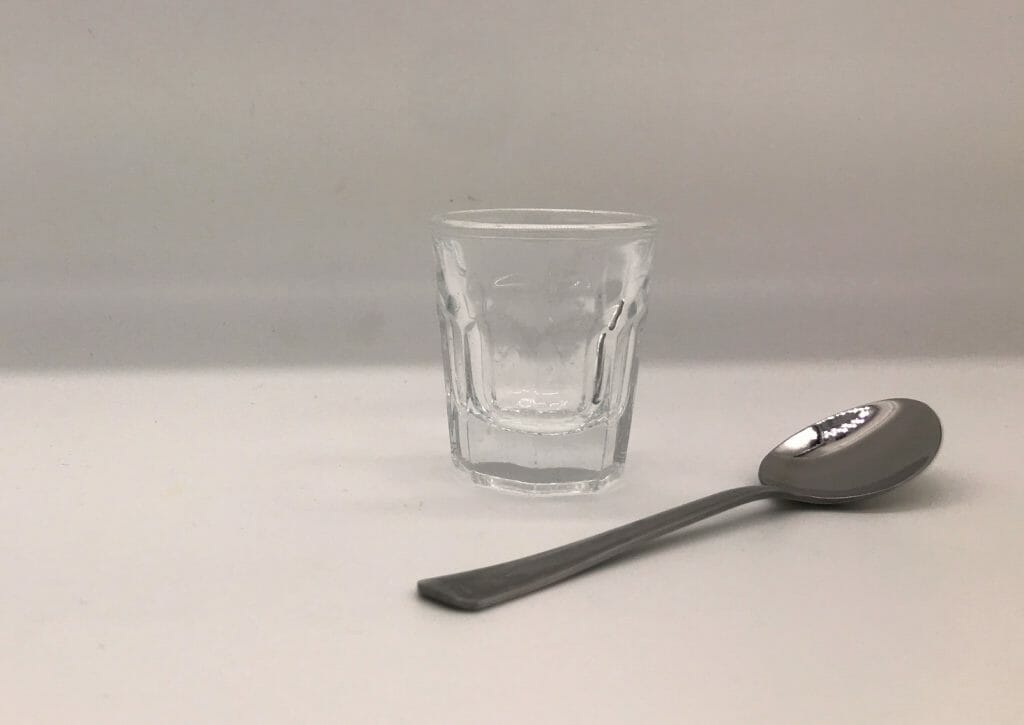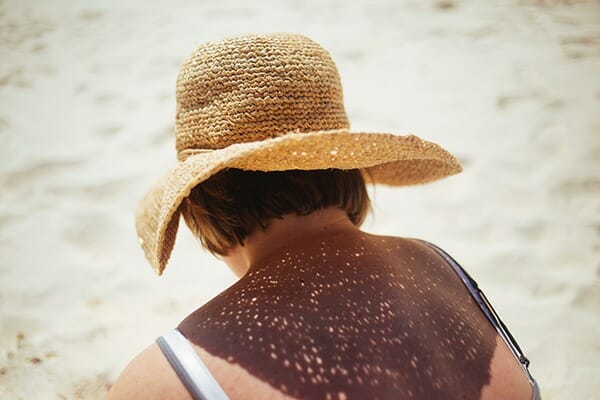One of the best things about summer is the sun. But as much fun as it is, the sun is also the single biggest danger to our skin’s health. Here at grüum, we’re all about happy skin, and one of the ways to keep our skin happy is to keep it healthy. Whilst the best way of doing that would arguably be to avoid the sun completely, we know from experience that the second the sun comes out we’re all either gravitating to the beer garden or inviting our pals over for a BBQ. Or failing that, we’re booking trips to sunnier climates.
These traditions mean it’s doubly important to use sunscreen to protect ourselves, and to use it properly. Using sunscreen in the correct way helps to keep our skin healthy and happy by protecting against UVA and UVB rays which can cause skin cancer and skin ageing. It’s important for everyone, but particularly for those with fairer skin and freckles. Follow our recipe for safer sun to protect yourself and your skin from these risks.
The sun is everywhere… literally
Remember you’re not just at risk from sunburn when you’re on holiday. May and June were the hottest since records began, and things are only set to get sunnier. It seems to be a common misconception that you can’t get a tan (or sunburn in the UK), but I’m pretty sure we all have experience that speaks otherwise.
It’s also really easy to think that just because it’s cloudy or overcast outside that you’ll be safe from the sun’s rays. But this isn’t the case! Both UVA and UVB rays are capable of penetrating clouds, so even though you may think you’re fairly safe, the simple likelihood is that you’re not. UVA rays even penetrate glass, so if you’re driving or indoors you’re still not protected.
Given this, it’s a good idea to think about incorporating a sunscreen into your daily summer skincare routine. Sure, a lot of daily moisturisers and makeup products include an SPF, and, yes, they are tested in the same way as sunscreens but varying factors means they simply don’t offer the same level of protection. This is because they’re less likely to be rub- and water-resistant – we’re pretty sure that anyone who’s ever worn makeup must have experienced that wonderful, face-melting feeling of foundation sliding down your face on a particularly balmy summer’s day. You’ll probably be fine if you’re just nipping out to hang up the washing, but leave it much longer and you’re unlikely to be sufficiently protected.
It’s up to you how you incorporate sunscreen into your everyday routine, but it’s really important that you do it! The easiest way to do this is to apply sunscreen alongside your moisturiser, or use a sunscreen with good moisturising properties; Altruist sunscreen does just the trick, keeping you hydrated without the excessively sticky feeling a lot of sunscreens can leave on your face.

Sunscreen – most people don’t use enough! How much, how often?
Most of us are guilty of getting up in the morning for a day of sun, slapping on a bit of sunscreen and then just going about our days. No matter how much sunscreen you apply at that point, it needs to be topped up regularly, especially if you’re partaking in certain activities. Regardless of what your day of sunshine enjoyment involves, you need to be reapplying sunscreen at least every two hours. It’s particularly important to do this on very hot, sunny days as increased UVB rays mean the risk of burning is higher. If you’re planning a day of swimming, bear in mind that water-resistant doesn’t mean waterproof. This is particularly important if you’re towel drying post dip, as the friction can rub off the cream, so you’ll need to reapply immediately. It’s also important to make sure you apply your sunscreen 20 minutes before you go outside to give the skin time to absorb it.
How often we should apply sunscreen is only half the battle; we’re also all guilty of not using enough.The recommended amount to use per application is 2g per cm² of your body. That roughly equates to a teaspoon for the face (including neck and ears) and a shot glass for the body. However, with sunscreen now being available in such a wide range of formulations – classic cream, aerosols, deodorant-style roll ons, and so on – it can be really difficult to gauge how much is enough. Given that, the best recommendation is to simply apply enough so that the skin looks completely covered by the white cream, before it sinks in properly.

Is there anything else you should be doing?
Whilst it’s really important to wear sunscreen to keep yourself safe from the sun’s rays, there are a few other additional things that are sensible to do when the sun is beating down. At times when the sun is particularly intense – get yourself in the shade. In the UK this is generally between 11am and 3pm, but if you’re abroad the duration is generally longer the closer to the equator you are. There are loads of different ways you can create shade whilst outdoors, keep an eye out for naturally occurring spaces covered by trees and foliage, or where buildings create shade. If you’re having a garden BBQ think about putting up a gazebo (also a great idea if the weather takes a turn for the worse, as it is one to do in this neck of the woods). Or try a parasol/umbrella – see aforementioned comment about multi-purpose items. If all else fails, then you’ll have to get yourself indoors. At the time it may not be appealing, but with the sun you really need to put your own safety first.
Your fashion choices can also help you stay safe in the sun. We get it. It’s hot, you want to be wearing as little as you feel comfortable in/is socially acceptable for your location. But the fact is, the more skin that’s covered up, the more skin that is protected. You’ll be best off in loose-fitting, dark clothing. Also, try to wear clothing that’s closer in weave so that the rays are kept as far out as possible. And if you decide to cover up in the pool by wearing a t-shirt make sure you swap it out for a dry one once you’re done, as wet clothes offer less protection. Hats are also great for creating shade and keeping the sun off your head, ears and neck. Look for wide-brimmed styles or ones with flaps around the back of the neck and ears for the best protection. Finally, it’s the ultimate summer accessory – sunglasses. It’s really important to get a pair that mentions either: ‘CE Mark’ and British Standard, UV 400 label, or have 100% UV protection written on the label or sticker. If you want to take this one step further, get a wraparound style to protect the side of your eyes.

But don’t I need to get my vitamin D fix?
In short, yes. Everybody needs vitamin D to keep their bones strong and healthy, something which occurs naturally when we’re exposed to the sun. A lack of vitamin D can cause serious health issues – and was given as one of the reasons for the resurgence of the tan in the 1900s. During the Industrial Revolution, as workers moved from outdoor fields to indoor factories, the risk of developing rickets and other diseases, attributed to lack of vitamin D, became much more common. This helped to support the myth of a tan being a sign of good health.
Everyone needs different amounts of vitamin D, but nobody needs to let their skin get sunburnt to get the amount they need. For most people, fifteen minutes of sun exposure on the arms three times a week will do the trick. It’s not stored by the body so there isn’t any benefit in getting much more than this. Additionally, it’s UVB rays that help with vitamin D production, so during the winter months, it’s recommended to take a supplement of 10 micrograms a day. However, as fifteen minutes of sunshine could cause very fair skinned people to burn, it is always safer to get your vitamin D from a supplement.
Another way you can boost your vitamin D intake is by eating the right foods. Foods that are naturally high in vitamin D include; fatty fish, such as tuna, salmon, and mackerel; cheese; egg yolks; and beef liver. Many foods are also fortified to help the body become vitamin D sufficient, such as orange juice, mushrooms and breakfast cereals. However, vitamin D only occurs in these foods in relatively small amounts. Again, if you’re concerned about your vitamin D intake, the best thing to do is to take a supplement, rather than trying to get more from the sun.
A final point on this is to remember that whilst sunlight may be the main source of vitamin D, it is also the leading cause of skin cancer.
Enjoy the sun safely with Altruist
Altruist Dermatologist Sunscreen has been developed by consultant dermatologist and skin cancer surgeon Dr Andrew Birnie in conjunction with some of Europe’s leading formulation scientists. Their mission is to reduce the incidence of skin cancer through increasing use of quality sunscreen, along with better education and awareness. Their #howmuchisenough campaign aims to raise awareness of using enough sunscreen, often: 1 teaspoon for the face, 1 shot glass for the body, repeat every two hours.



